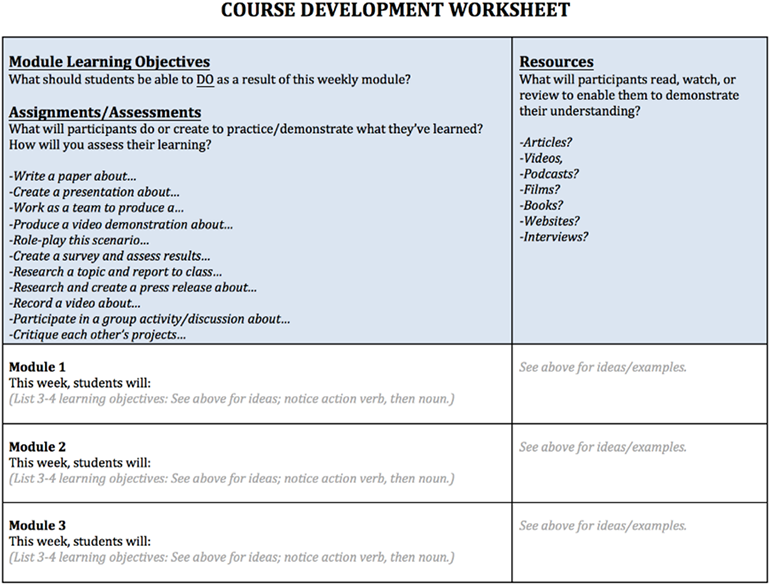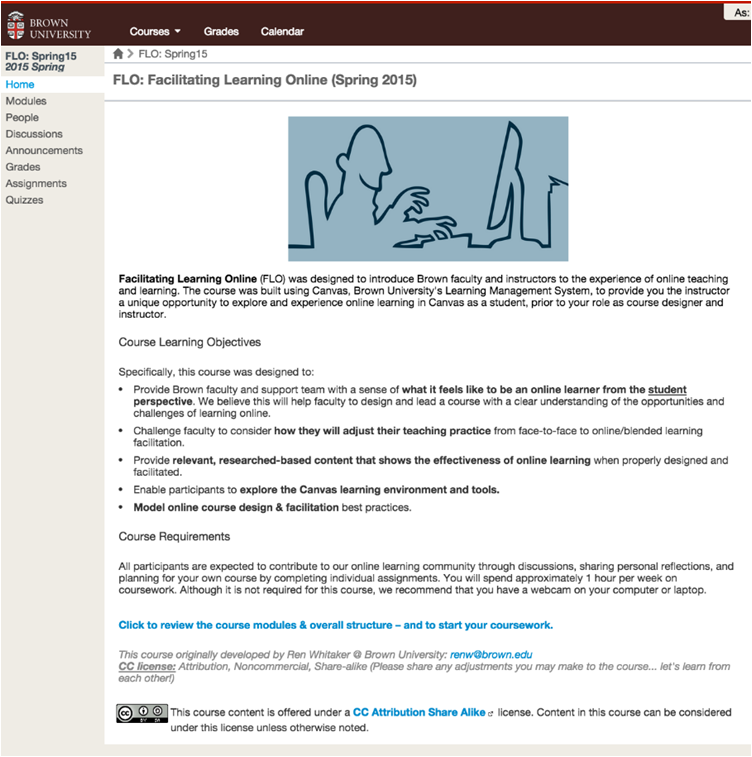The following article by Stephanie Maher Palenque and Meredith DeCosta PhD discusses some great techniques to help increase instructor presence online:
Faculty use asynchronous discussions to extend and enhance instructional practices in the online classroom. It is widely reported that online discussions play an integral role in facilitating students’ learning, as well as fostering dialogue, critical thinking, and reflective inquiry (Kayler & Weller, 2007; Morris, Finnegan, & Sz-Shyan, 2005). Despite faculty’s knowledge that discussion forums can serve as a useful learning tool, online discussions are not easy to establish and manage.
The Science of Online Discussions
Our working knowledge regarding distance education suggests that productive discussions are essential to learning in an asynchronous online environment. Online discussions effectively take the place of face-to-face classroom discussion. It has even been suggested that, if well facilitated, online discussions may allow for more in-depth and thoughtful learning than is possible in a face-to-face setting (Hawkes, 2006). Gao, Wang, and Sun (2009) contend that in a productive online discussion, it is essential for participants to embrace the following four dispositions:
Our working knowledge regarding distance education suggests that productive discussions are essential to learning in an asynchronous online environment. Online discussions effectively take the place of face-to-face classroom discussion. It has even been suggested that, if well facilitated, online discussions may allow for more in-depth and thoughtful learning than is possible in a face-to-face setting (Hawkes, 2006). Gao, Wang, and Sun (2009) contend that in a productive online discussion, it is essential for participants to embrace the following four dispositions:
- Discuss to comprehend. Cognitive efforts such as questioning, interpreting, elaborating, or relating information to prior knowledge should be the focus in any productive discussion. According to cognitive psychologists, students are more likely to understand and retain information when they participate in these cognitive activities (Gao, Zhang, & Franklin, 2013).
- Discuss to critique. Conflicting perspectives of students should be developed and examined in any productive discussion. Knowledge acquisition originates from cognitive conflicts from social interactions. These conflicts not only occur between students but also between an individual’s existing knowledge and new information encountered in discussions with other students. The real learning takes place when students re-examine their original positions on an issue and explore new resolutions. (Gao, Zhang, & Franklin, 2013).
- Discuss to construct knowledge. Gao, Zhang, and Franklin (2013) suggest that a productive discussion should offer students ample opportunities for interaction and collaboration with classmates. From a social constructivist perspective, individuals do not learn in isolation. It is only through this interaction that a richer understanding of the topic will take place.
- Discuss to share. Productive learning takes place when students are part of a larger, active community. A community of learners, which represents the ideal discussion forum environment, is one in which students embrace a sense of belonging, support each other, develop shared values, and enjoy their shared identity (Gao, Zhang, & Franklin, 2013).
The Art of Online Discussions
Along with science comes its partner: art. People who aren’t familiar with online teaching and learning will often ask, “Is it possible to mirror intellectual conversations held with students in a ground classroom in the online environment?” and “Can we engage in the subtleties of face-to-face dialogue in the online classroom?” Our answer is, “Yes.” Although students in the online classroom are separated by time and space, thoughtfully formulated discussions can close this gap. The following represent strategies to transform you into an online discussion forum artist:
Along with science comes its partner: art. People who aren’t familiar with online teaching and learning will often ask, “Is it possible to mirror intellectual conversations held with students in a ground classroom in the online environment?” and “Can we engage in the subtleties of face-to-face dialogue in the online classroom?” Our answer is, “Yes.” Although students in the online classroom are separated by time and space, thoughtfully formulated discussions can close this gap. The following represent strategies to transform you into an online discussion forum artist:
- Touch all students in the forum. In most conversations, we acknowledge all participants, even those who are not speaking, by making eye contact, nodding, and responding as needed. The same applies to an online discussion. All students contribute in some way to the forum during a course; it is the teacher’s responsibility to acknowledge their efforts. Recognition can include a congratulatory post, a note of thanks, or a question or scenario designed to further thinking.
- Know what each student needs. What students say (and do not say) in the forum communicates their comfort level in the course. A student who actively participates in the forums may need the instructor to elevate thinking by artfully challenging perceptions and impressions. A student who expresses confusion about the content in the forums may benefit from a Classroom Assessment Technique (Angelo & Cross, 1993) to help the instructor gauge the point of confusion and reveal gaps in the student’s current knowledge.
- Be mindful of possibilities. Postings are not one size fits all. As online instructors, we risk hindering progress when we only award credit for posts that are lengthy, particularly at the undergraduate level. We always try not to penalize students who opt to take a brief turn in the conversation as long as the post is substantive, of merit, and adds to the discussion.
- Know when to lead and when to be led. There are times we want to guide the discussion and times when we should allow students to carry the weight. One common mistake instructors make in the online classroom is to attempt to drive every conversation. Occasionally students may need to take charge in order to learn the material.
Science and art are natural partners – both are a means of investigation of the world around us. When instructors make a concerted effort to balance both the science and art of facilitating a productive, enriching online discussion among a community of learners, the rewards are abundant.
References:
Angelo, T. A., & Cross, K. P. (1993). Classroom assessment techniques: A handbook for college teachers. San Francisco, CA: Jossey-Bass.
Angelo, T. A., & Cross, K. P. (1993). Classroom assessment techniques: A handbook for college teachers. San Francisco, CA: Jossey-Bass.
Gao, F., Zhang, T., & Franklin, T. (2013). Designing asynchronous online discussion environments: Recent progress and possible future directions. British Journal of Educational Technology, 44(3), 469-483.
Hawkes, M. (2006). Linguistic discourse variables as indicators of reflective online interaction. American Journal of Distance Education, 20(4), 231-244.
Kayler, M. & Weller, K. (2007). Pedagogy, self-assessment, and online discussion groups. Journal of Educational Technology & Society, 10(1), 136–147.
Morris, K.V., Finnegan, C. & Sz-Shyan, W. (2005). Tracking student behavior, persistence, and achievement in online courses. Internet and Higher Education, 8(3), 221–231.
Stephanie Maher Palenque, MA and Meredith DeCosta, PhD teach at Grand Canyon University.


